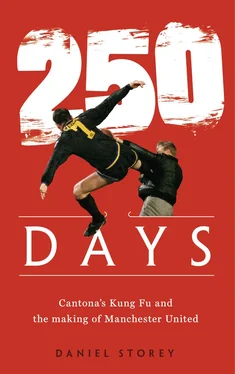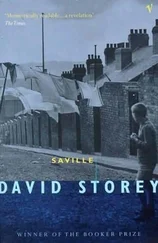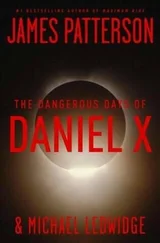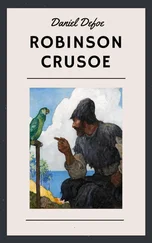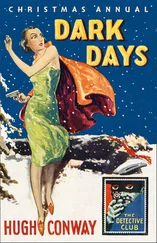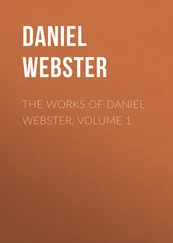‘He changed the mentality and changed the way of everything,’ Peter Schmeichel said. ‘All the kids we’ve seen grow up with Manchester United from that period, they’ve really benefited from that and you could go and speak to David Beckham, Gary Neville and Paul Scholes about him. They will always point to him, as he was the guy.’
It is wonderfully fitting that Cantona’s first game back, against Liverpool at Anfield, was the first match in which all six of the ‘Class of 92’ appeared in a Manchester United shirt: Gary Neville, Phil Neville, Nicky Butt and Ryan Giggs as starters, David Beckham and Paul Scholes as substitutes.
This is the story of Cantona’s lasting impact on Manchester United, told through the 250 days between assault and comeback. A man whose temperament was questioned when he signed ultimately failed to escape his imperfections. But rather than erode his and Ferguson’s legacy, it only helped to define both.
‘Go on, Cantona, have an early shower’
At 8.57 pm, Steve Lindsell got the shot.
Lindsell had gone to Selhurst Park on a Wednesday evening to watch Manchester United try to move to the top of the Premier League and witness the third anniversary of Eric Cantona’s arrival in English football through the lens of his camera. He was positioned on the touchline, primed. He would hope to sell a few choice photos – a goal celebration, frustration etched onto a contorted face, a manager thrusting his hands in pockets to protect against the cold January night – to several media outlets.
Right place, right time. Midway through the second half, Lindsell hurriedly clicked his shutter and took the photos that captured the most outrageous moment of the Premier League’s first decade. The most famous footballer in the land had both feet off the ground. One was planted into the chest of a supporter. Around him, fans who had rushed to the ground after work, or paced the same walk from their homes as they had done a hundred times before, watched on. Just another home game had become a match they would never forget.
‘I snapped, and snapped again,’ Lindsell said. ‘I thought I had a good picture but couldn’t imagine the impact it would have. I went to my van outside Selhurst Park, printed the roll, which must have taken me 15 to 20 minutes, then sent the pictures. It was only the day afterwards that all hell broke loose.’
Before the 48th minute Cantona had been a passenger in an uneventful game. Palace, just outside the relegation zone on goal difference, had broken up play effectively and limited Manchester United to a series of half chances. This was largely due to the man-marking job done on Cantona by Palace central defender Richard Shaw, who had been instructed by manager Alan Smith to stay touch-tight to the Frenchman.
Smith and Shaw would later insist that the defender was merely doing his job, but Cantona spent the first half complaining about the physical treatment that referee Alan Wilkie had either failed to spot or chosen to ignore. The reality is that Shaw left his foot in on more than one occasion to both put Cantona off his game and try to rile the Frenchman. It was common practice at the time; the hallmarks of the old First Division hadn’t quite been erased.
Wilkie remembers Cantona chastising him as the players left the field at half-time – ‘No yellow cards!’ – and the Frenchman repeating the message as the players waited in the tunnel to come back out for the second half. But, as ever, it was Ferguson’s message that most stuck in Wilkie’s mind. ‘Why don’t you do your fucking job?’ was the Manchester United manager’s presumably rhetorical question. This was par for Ferguson’s course.
What is certainly true is that Ferguson had spoken to Cantona in the dressing room at half-time to warn him not to get involved in Shaw’s games. ‘Don’t get involved,’ he quotes himself as saying in his autobiography. ‘That is exactly what he wants. Keep the ball away from him. He thinks he is having a good game if he is tackling.’
As an experienced – and very capable – central defender, seeing Cantona’s frustration was only likely to make Shaw step up his strategy. You could hardly blame him. Palace could not hope to contend with United on ability.
‘It was all Shawsy’s fault as well,’ Shaw’s teammate John Salako later said with his tongue inserted in cheek. ‘Richard was the best man-marker ever. He had a job to do on Eric and he did it so well Eric got so frustrated he literally booted Shawsy up the arse. Eric lost the plot.’
Three minutes into the second half, Peter Schmeichel launched a goal kick forward and Shaw and Cantona clashed again. Shaw was certainly the first to commit an offence – the linesman flagged to indicate as such – but it was Cantona’s kick-out at Shaw that earned the wrath of the officials. It clearly constituted violent conduct, and Wilkie was left with no choice but to show Cantona a red card. On the touchline, Ferguson was incandescent with anger.
Later, in court, Cantona would accept Wilkie’s decision to send him off but complained at his treatment by Shaw. ‘In my opinion, his decision was correct,’ he said in a statement read out by his barrister David Poole, ‘although I had been repeatedly and painfully fouled in the course of the match.’
One of the direct results of the Cantona incident was that the rule was changed regarding post-red card events. Until the end of the 1994/95 season a player in English football would leave the field at the nearest point following their dismissal. Then followed what was a potentially long walk around the perimeter of the pitch to the tunnel, often passing large swathes of opposition supporters who had free rein to offer their own personalised farewell messages. From August 1995 onwards, players left the field in a direct line towards the tunnel. In hindsight, it is extraordinary that it was ever different.
It does not condone Cantona’s subsequent actions, but the atmosphere at Selhurst Park was notoriously raucous and there is no doubt that any opposition player making the walk in front of the Main Stand would have faced many hundreds of taunts and foul-mouthed tirades.
But for Cantona, that abuse was worse than usual because of who he was, where he came from and which team he played for. Twice Cantona can be seen looking up to the stands in response to particular fans, but after a momentary pause he walks on.
‘It wasn’t just the tackles and shirt pulling he had to deal with that night that pushed him over the edge,’ said then-teammate Gary Pallister in 2015. ‘It was the culmination of a lot of abuse Eric had to put up with at every ground he went to.
‘You wouldn’t believe the kind of vile verbal abuse that was directed at him when we arrived at opposition grounds and got off the bus. Even when we went to the horse races, Eric couldn’t escape it. I remember at one race meeting he was being spat on from a balcony in the enclosure above where we were standing. He was a target, there was no doubt about it.’
One of those supporters delighting in Cantona’s ignominious and premature departure from the pitch was 20-year-old Matthew Simmons. Eye-witnesses said that Simmons had rushed down 11 rows of the Main Stand in order to get as close as possible to the Frenchman to abuse him, though Simmons would later claim that he was merely leaving his seat to visit the toilet.
The language Simmons used is also open to interpretation. Rather comically, he claimed to police in a follow-up interview that he had used the words ‘Off, off, off. Go on, Cantona, have an early shower.’ A slightly different account was heard in court by a witness attending the game as a neutral, and who quoted Simmons as shouting, ‘You fucking cheating French cunt. Fuck off back to France, you motherfucker. French bastard. Wanker.’
Читать дальше
